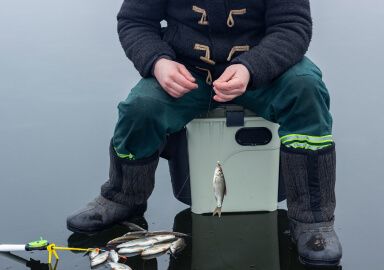Whiting
Whiting is a common name given to various inshore “cod like” fish in many of the cooler water areas of the world.
View 5 listings
5
listings
–
price starting from
2
countries
–
to the nearest trip
Where and When?
European whiting are found from the Arctic circle southwards to the Mediterranean Sea, but are most common in the North Sea. Canadian and American “whiting” may also be found from the Arctic Circle southwards to Argentina on the Eastern Seaboard. In Australia the various “whiting” species live around the southern tips of the continent. All species live in coastal, mostly fairly shallow, waters including sometimes estuaries and lagoons. Fishing can be carried out throughout the year in most places and, although they can be caught any time of the day, they usually seem to prefer windier periods, or times of water movement such as when the tide is coming in during spring tides. The fish in shallow waters can easily be frightened by movement and so dawn or dusk fishing can be more productive.
About Whiting
The original “whiting” stems from Europe and refers to the species Merlangius merlangus, of the “cod” family Gadidae. As European settlers spread over the globe they used the name for local similar-looking species. In North America it is now used for several members of the Merluccius genus of hakes, while in Canada the name usually refers to the Alaska pollock, Theragra chalcogramma. In Australia 13 species of the Sillaginoides genus of the Sillaginidae family are referred to as “whiting”. All the species have similarities in form, being basically torpedo shaped with pointed snouts, and all are effectively silvery in colour over most of the body. All are also mostly shallow water, inshore species that predate primarily on invertebrates. Spawning takes place in batches offshore and juveniles are found closer to shore. Some species form dense shoals while others are more dispersed. Sexes are generally alike and maximum size depends on the species. The “traditional” European whiting can attain over 90 centimeters (35 in.) and 3.1 kilograms ( 7 lbs.) but most fish caught are around 30 centimeters (12 in.). Most other species are of smaller sizes, but in Australia the more robust “King George Whiting” can attain 4.8 kilograms (10.5 lbs.) at a length of 80 centimeters (31in.).
How to Catch?
While boat fishing can be productive and is essential in some areas, much fishing for whiting is carried out from beaches, rocks and headlands using light tackle. Shore fishing gives the angler a lot of control over where the bait is going and he can more easily target inshore structures like reefs and gravelly gullies. As no whiting really grows to great sizes and most are actually pretty small, light tackle is the way to go for fun as well as results. In some areas it is possible to spin using plastics or fly fish for whiting, but, as the fish are mostly closely associated with the bottom and eat mostly benthic organisms, bait fishing using natural baits from the area is usually the best option. The tactic is usually to carefully approach a likely looking area and then cast a bait, on a small hook, with a smallish, running sinker, to a promising looking area. The most effective baits are usually live shrimp, peeled shrimp, clams, mussels and other similar baits. Jigs may be used from boats to target larger whiting and poppers can be successful from the shore if there are a good number of whiting around. Whiting fishing may not create exciting lifetime memories, but it can build up a memory bank of pleasant, stress free, recollections.






